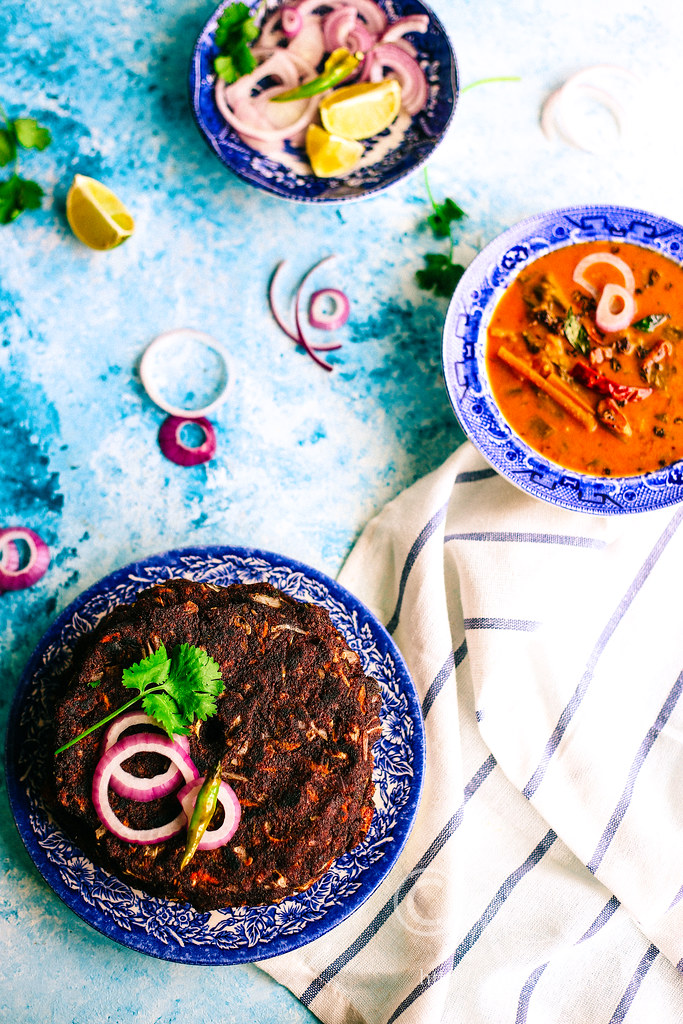
Learn how to make Veg and Coconut Ragi Rotti ~ Vegan and gluten free coconut and veggie loaded finger millet flour flat bread
“Ghar ki murgi daal baraabar” is a Hindi idiom which I have come to appreciate over the time. The literal word by word translation is a chicken at home is no better than daal (everyday lentil soup) and it is used when someone undervalues the things which they own. It is quite similar to English quote ‘the grass is greener on other side’. Are you wondering why I am talking about chicken, lentil soup and grass today? Well, I have a very good reason to rant about… So stay with me if you have time to hear (more like read) my rants, or simply scroll down to the recipe of Veg and Coconut Ragi Rotti, a vegan, gluten-free finger millet flour flat bread loaded with vegetables and coconut.

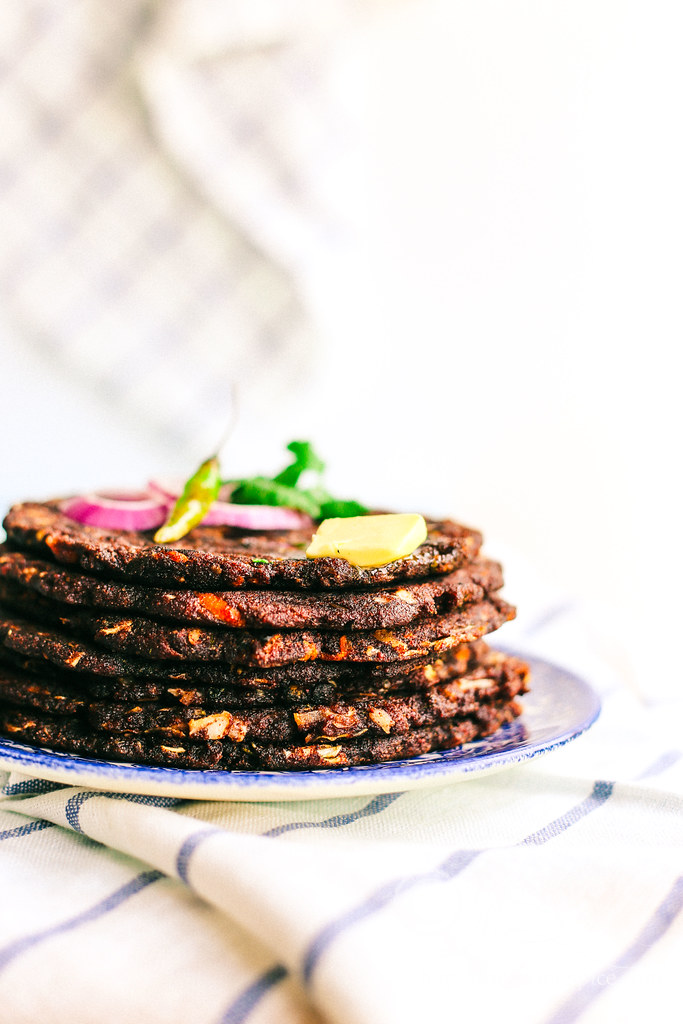
In the last couple of years I have seen a rise in interest for the super foods. While quinoa, kale, green tea, cranberries were the super foods of the past, the cauliflower, chia seeds, coconut and beetroots are the trending super foods of the present. As much as I appreciate the health benefits they have, you will never find me publishing recipes after recipes of green, red, pink and rainbow coloured smoothie bowls, cauliflower rice, chia seed puddings etc here in my blog unless my family and I really love the dish! I am not a food snob, and I don’t follow any latest food trends. Being a food blogger and running in a circle of foodies, I am bound to come across many articles and recipes that celebrate the current food trends. I enjoy reading them, swooning over the beautiful food photographs, and sometimes, I try couple of recipes to see what the hoopla was all about. That’s where my fascination with the super foods ends as I just continue to cook and enjoy the food that I am most familiar with, like ancient grains that have been tried and cooked for centuries by our ancestors in India.
Growing in a joint family is a wonderful way for a child to get introduced to and get familiar with the traditional food and I feel both humbled and privileged to have had that kind of experience. In Hinduism, a baby is introduced to the solid food with a ceremony called Annaprashanam where the elders of a family bless the child by feeding rice payasam (rice pudding). Slowly an array of solid food is added to baby’s daily menu like mashed dal/lentils, rice, veggies and fruits. One of the food that is considered to be nutritious and baby’s overall growth is Ragi or Finger Millet. The sprouted ragi grains are sun dried and then ground to powder which is then cooked in milk to make a thin paste to feed the babies. Ragi along with other whole grains such as barley, brown rice, and amaranth were staples of South Indian meals during pre-independence times. These grains and cereals are the super foods in every sense were the staples and part of every meal a generation ago, but unfortunately were side lined as many favoured polished white rice to whole grains. Thankfully the food scene is slowly changing and there is a lot of interest in ancient grains these days.
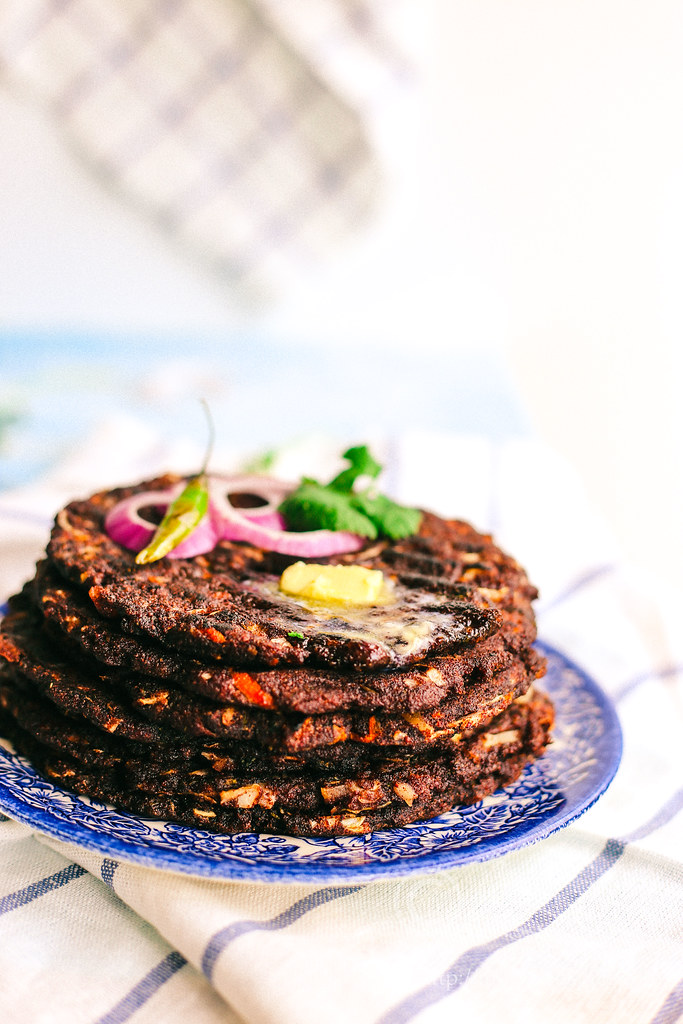
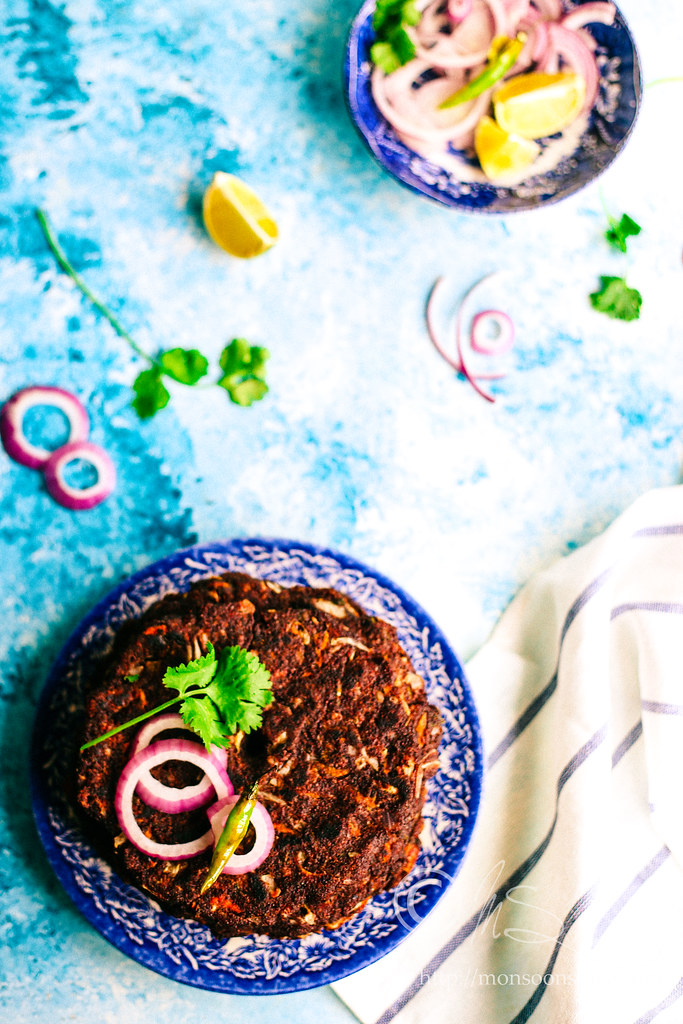
A whole grain is one which contains all three parts of the kernel; the bran, germ and endosperm while refined ones are processed to retain just the endosperm. The fibre rich bran and the germ in a wholegrain are what make them healthier as all the goodness and other essential nutrients are retained unlike processed grains. Ragi is a rich source of good carbohydrates and calcium and since it is too tiny to be polished or processed it is mostly consumed in its purest form. The once well-known and well-consumed Ragi or Finger Millet is one such super grain which unfortunately has disappeared from most of our diet. As I said, ‘ghar ki murgi daal baraabar’ and considering the very high health benefits it’s really surprising that we continue to undervalue and underuse it. I wish we were more accepting of these ancient grains as much as we embrace the super foods which cost at least 4 times more! Ragi makes an appearance on our dinner table at least twice a week followed by foxtail millet and broken wheat or dalia and the more I cook and eat them, the more I am falling in love with these earthy tasting grains.
Raagi or Ragi or Finger Millet originated in East Africa and came to India around 4000 years ago. Earliest records of its cultivation in India show that it was cultivated in the Hallur region of Karnataka in the later Iron Age. It remains one of the main ingredients of the staple diet in Karnataka who is the top producer & has 58% share in India's export of this crop. Although the grain’s protein content is comparable to that of rice, some ragi varieties have shown double that level. With its high nutrition value, rich mineral, antioxidant and fibre contents, it is still looked upon as a “poor person’s crop” or a “famine food” which is a shame as it has been scientifically proved to control diabetes, reduces bad cholesterol, prevents cardiovascular diseases, and has anti-cancer potential.
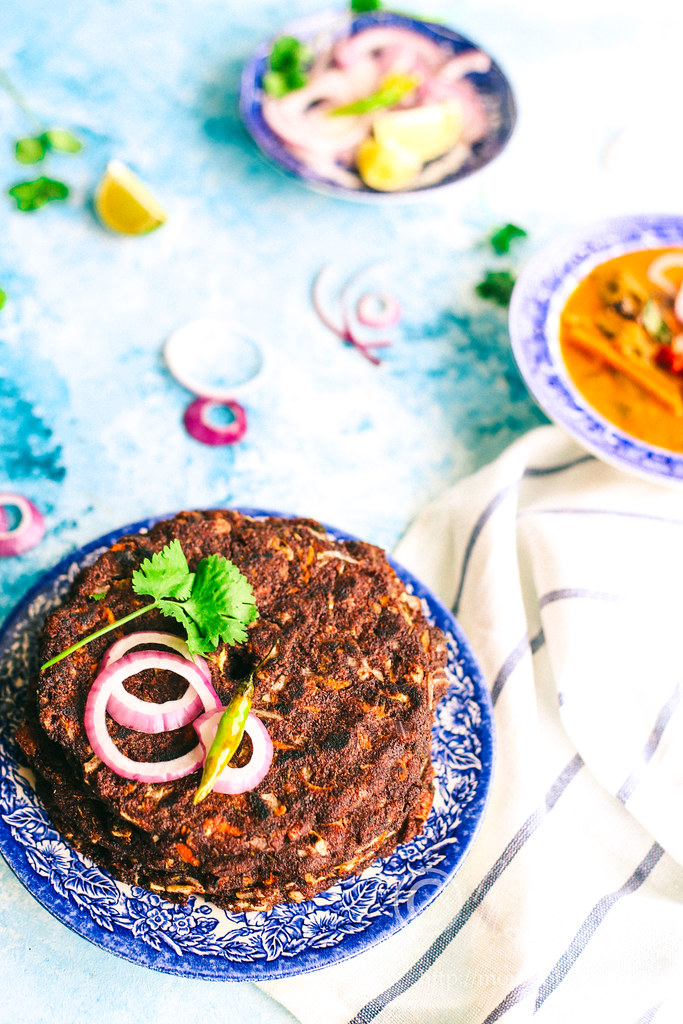
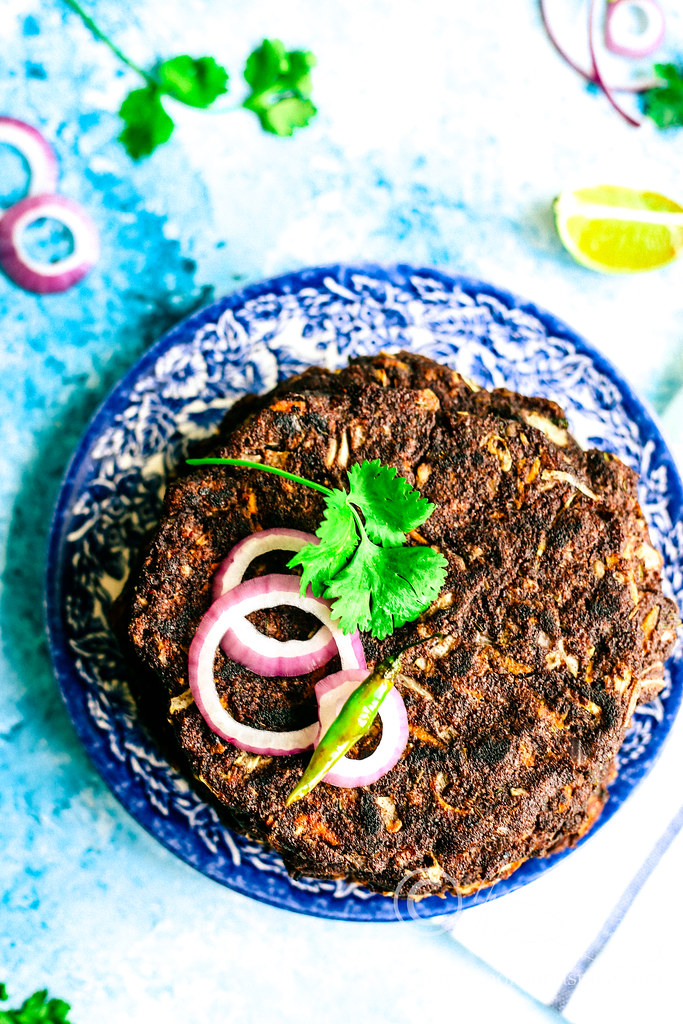
Traditionally, ragi is given to infants and young children as Ragi Malt as it is easier to digest. I grew up drinking it throughout my school years along with other food preparations like rotti (unleavened flatbread), dosa (leavened crepes), idli (steamed cakes) and ganji (conjee) all served with a steaming bowl of Sambar or Huli and assorted chutneys. In Karnataka, ragi is generally consumed in the form of ragi mudde (balls) which is the staple diet of many residents of South Karnataka, especially in the rural areas. Mudde is prepared by cooking the ragi flour with water to achieve a dough-like consistency. This is then rolled into 'balls' of desired size and consumed with huli or saaru.
My first experience of eating Mudde was when I was studying masters in Bangalore where our hostel cook generously shared her lunch with me. The novice mudde eater that I was, I chewed the large piece of of mudde dunked in huli and ended up with a mouthful of sticky paste! After laughing for good 5 minutes, the lady showed me the proper way to eat it by taking a small biteable size of mudde, dipping it in the curry and swallowing it wholly without biting into the pieces! It is a skill that took me a long time to master!!!
Coming to today’s recipe, I made this Veg and Coconut Ragi Rotti by heating 2 tbsp of oil and adding cumin seeds, hing and curry leaves, then quickly fried very finely chopped onions and green chillies, followed by shredded cabbage and carrot. Added hot boiled water, chopped coriander leaves, salt, red chilli powder for some kick and mixed ragi flour. Turned off the heat and mixed everything to form dough. Once it was cool enough to handle, made lemon sized balls and patted down on a greased baking paper to make thin roti. Cooked on both sides, by drizzling some ghee/oil on the edges, until they turned brown and crisp. The earthy taste of ragi with light crunch from vegetables, citrusy flavour from herbs, sweetness from coconut and light kick from green chillies makes it a wonderful and hearty meal which can be served for breakfast, lunch, dinner or anything in between! I served them hot with a hearty Soppina Huli (recipe to follow) and coconut chutney! LD loves eating them with freshly churned butter. It was a fabulous meal!
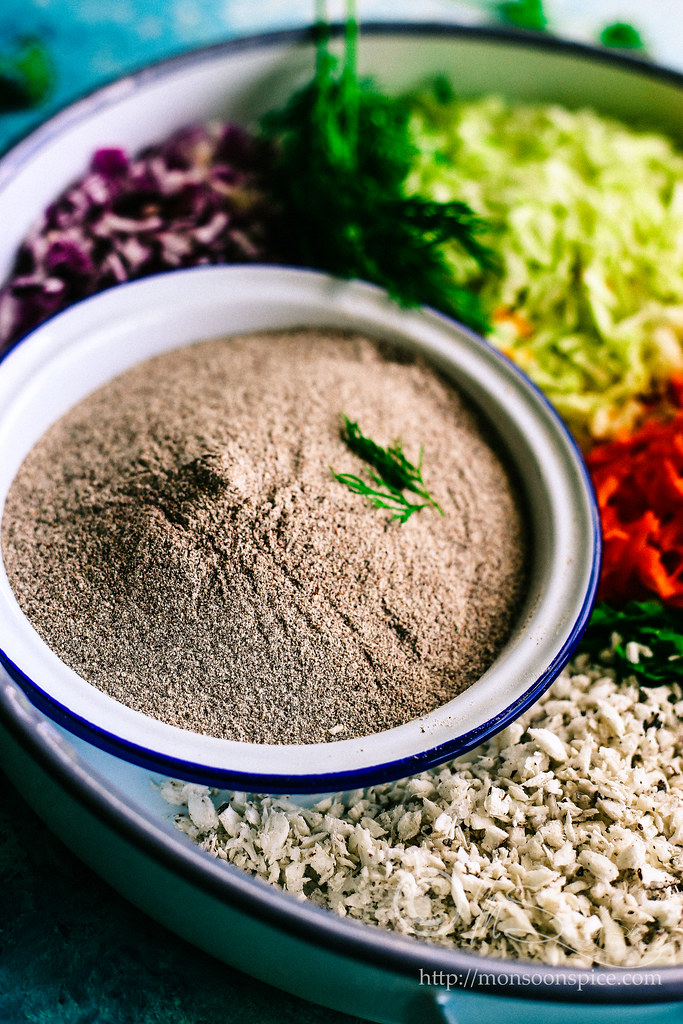
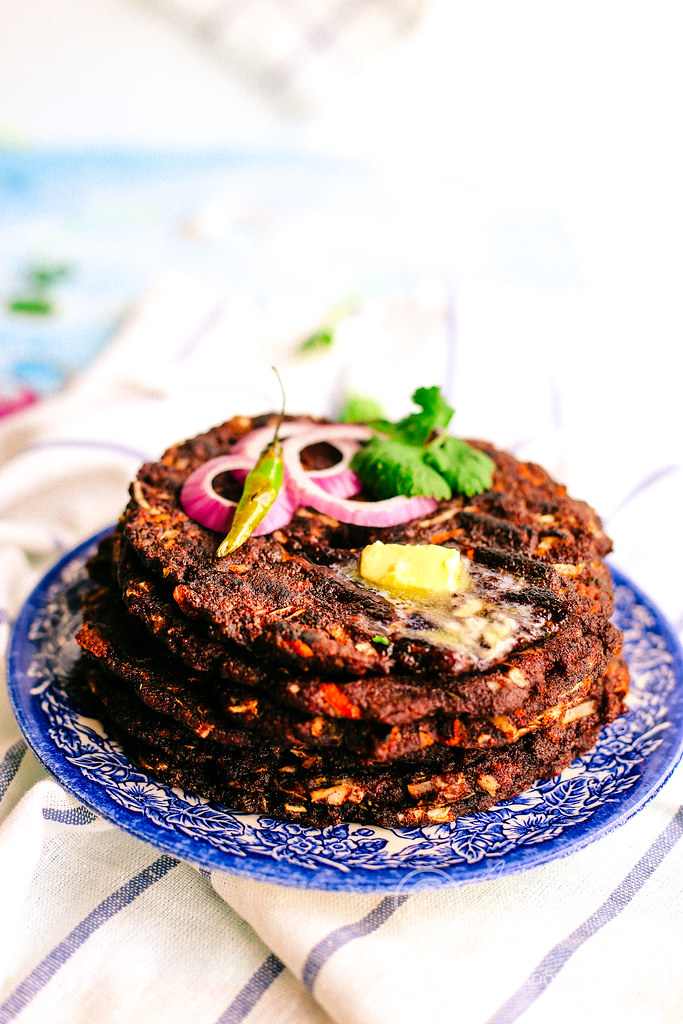
Veg and Coconut Ragi Rotti (Vegan and gluten free coconut and veggie loaded finger millet flour flat bread)
Prep Time: 10-15 mins
Cooking Time: Around 25-30 mins
Recipe Level: Easy/Beginner
Spice Level: Low to Medium
Makes: 7-8 Rotti
Shelf Life: Best served fresh or can be refrigerated for a day
Serving Suggestion: With Huli or Sambar or with Coconut Chutney
Ingredients:
2½-3 cups Ragi Flour/Finger Millet Flour
1 medium or about ½ cup Onion, finely chopped
2-3 Green Chillies, finely chopped (Optional. Adjust as per taste)
1 large or about 1 cup Carrot, peeled and grated
¼ head or about 1 cup Cabbage, finely chopped
½ cup grated Coconut
½ cup Coriander Leaves, finely chopped
¼ cup Dill Leaves, finely chopped (Optional)
1½-2 tsp Salt (Adjust as per taste)
For Tadka/Tempering:
2 tsp Jeera/Cumin Seeds
¼ tsp Hing/Asafoetida
1-2 sprigs Curry Leaves, chopped
1-2 tbsp. Oil (I have used Coconut Oil)
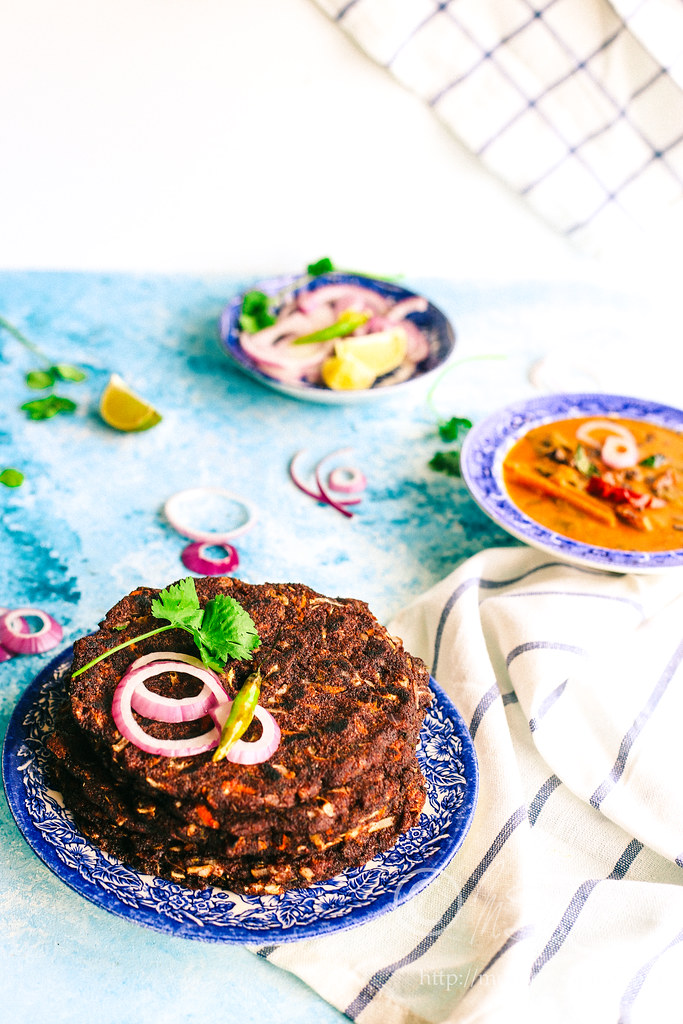
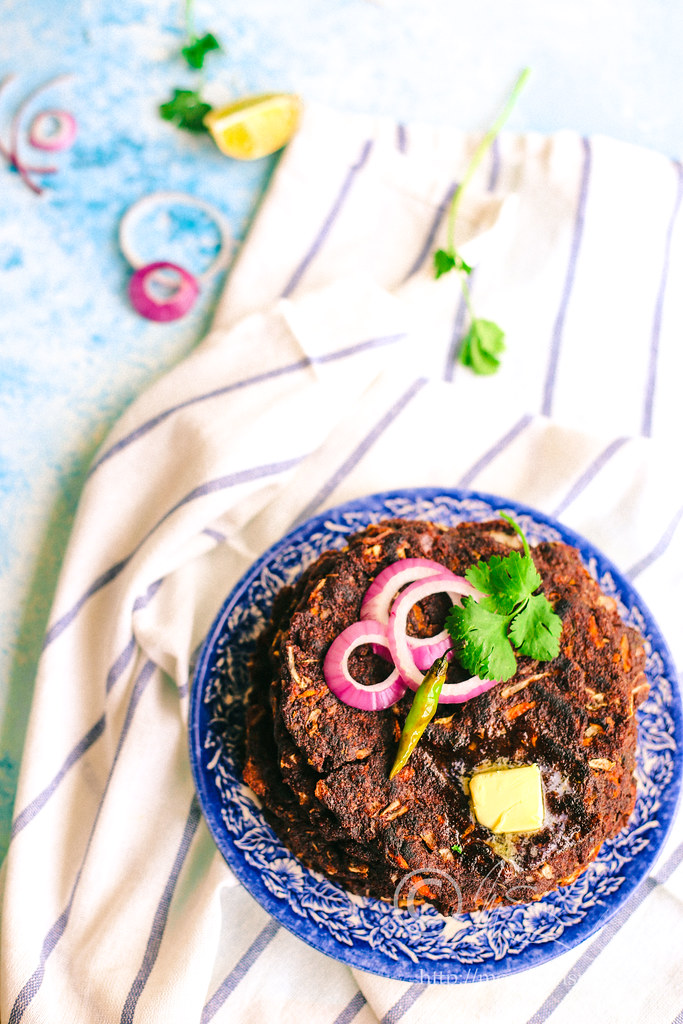 Method:
Preparation:
Method:
Preparation:
- Finely chop the onion, green chillies, cabbage, coriander leaves and dill leaves and keep them aside.
- Peel and grate the carrot and keep it aside. If using coconut, grate it and keep it aside until needed.
- Boil water in a kettle and keep it ready.
To make the Rotti dough:
- Heat oil in a heavy bottomed pan or kadai/wok, and add cumin seeds and hing to it.
- Once the cumin seeds start to brown and sizzle, add finely chopped green chillies and curry leaves and cook for half a minute.
- Add finely chopped onions and sauté it for a minute or two on a medium flame.
- Mix in shredded cabbage and grated carrots and cook on medium heat for 2-3 minutes.
- Add grated coconut, coriander leaves, dill leaves and salt to taste and give it a good mix before adding about 5-6 cups of boiled hot water.
- Next add ragi flour and stir it with a help of wooden spoon till all the flour is mixed well with the vegetables and forms dough. This dough will be sticky but dense and you should easily be able to pat it thin using your fingers.
Proceed to make Rotti:
- The best way to make this Ragi Rotti is to pat them directly on tawa/griddle. If you are not very confident about patting them directly on hot griddle, then you can pat them on greased banana leaf/parchment paper/aluminium foil and then transfer to the hot tawa. But patting them directly on the tawa gives this rotti a smooth finish and a very crisp texture.
- To make them directly on the tawa (I prefer non-stick tawa/griddle), take tennis ball sized dough and place it in the centre of a tawa. Now with the help of your fingers, start patting them to form a circle of ½ cm thickness. If the dough sticks to your hand, simply dip your finger in a bowl of cool water and continue to pat to make round rotti. Make a small hole in the center.
- Now place that tawa on back on flame and let the rotti cook on medium flame. Add a tsp of oil or Ghee around the edges of rotti and in to the hole in the center. Let it cook undisturbed for around 3-4 minutes on medium flame.
- Add another tsp of oil or ghee on top and flip it around gently and cook for another 2-3 minutes till brown spots starts to appear and the rotti turns crisp.
- To proceed to make more rotti, invert the hot tawa or griddle and place it under cold running water for few seconds to cool the tawa slightly.
- Dip the fingers in cold water and proceed to pat the dough into thin rotti and cook it following the directions.
- Serve these delicious Vegan and Gluten-free Veg and Coconut Ragi Rotti with any chutneys (preferably coconut based chutneys), or huli or Sambar. Enjoy!
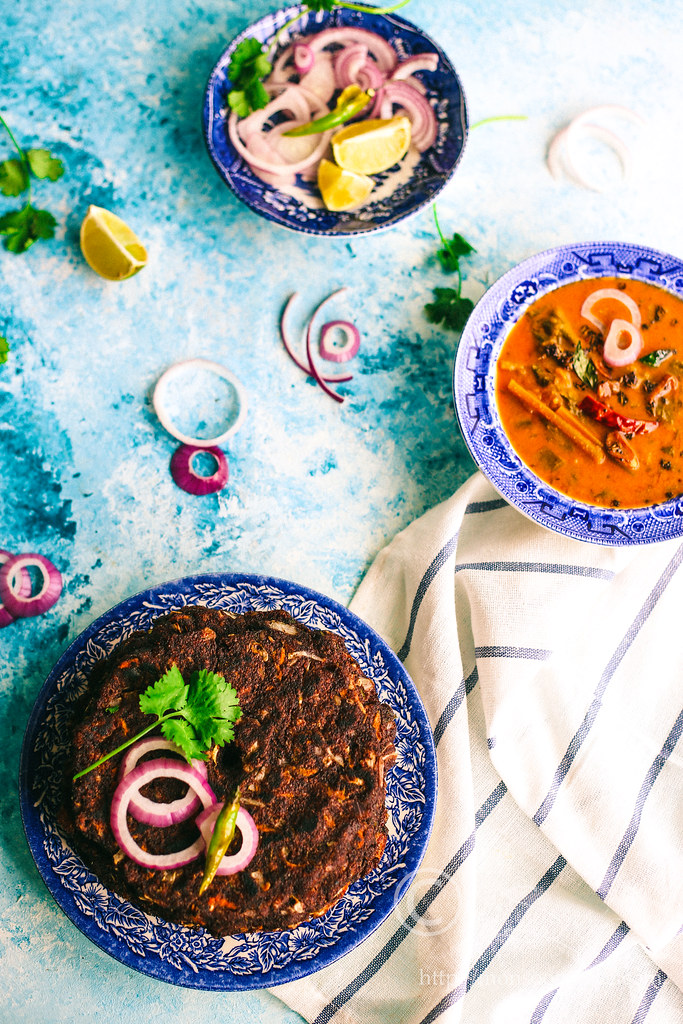
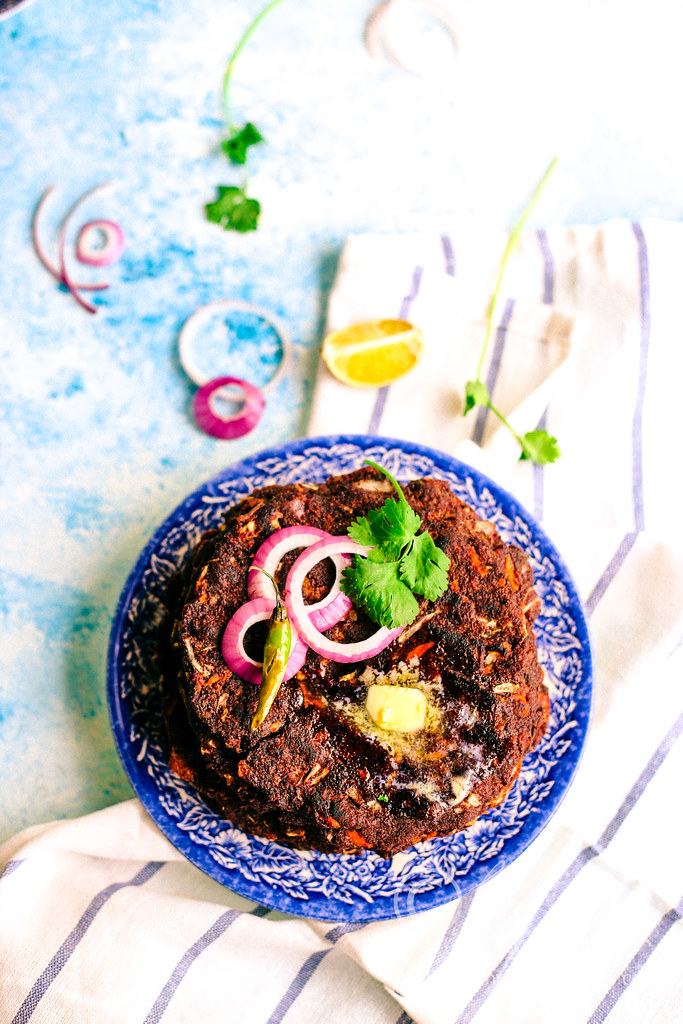
Sia’s Notes:
- You can also add green leafy vegetables like finely chopped spinach or fenugreek leaves.
- I usually use non-stick tawa if I am patting the rotti directly on the tawa but you can also use cast-iron tawa which gives perfect crisp texture to this delicious Ragi Rotti.
- The best way to make this Ragi Rotti is to pat them directly on tawa/griddle. If you are not very confident about patting them directly on hot griddle, then you can pat them on greased banana leaf/parchment paper/aluminium foil and then transfer to the hot tawa. But patting them directly on the tawa gives this rotti a smooth finish and a very crisp texture.














Love the earthy taste of ragi. Of all the preparations ragi Rotti is my all time favorite, and my mom makes the best. But Sia I have never even thought of adding shredded veggies in this, thank you for the inspiration have to try this. Would love to learn more recipes using ragi
ReplyDeleteThanks, Shilpa! I use ragi extensivelyin makng dosa, idli, pancakes, rotti etc. I will try and post couple of recipes :)
DeleteThank you Sia :)
DeleteYou are most welcome :)
DeleteNice recipe Madam Sia...I only know Ragi Sankati recipe with Ragiflour...It's really amazing and quite healthy recipe...Thanks for sharing !!
ReplyDeleteRagi Sankati? Sounds interesting and I will look it up as I have not heard of this dish. Thanks for dropping by, Naga Sri.
Delete